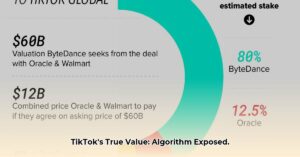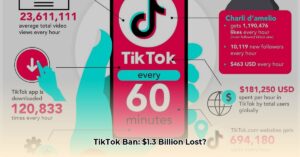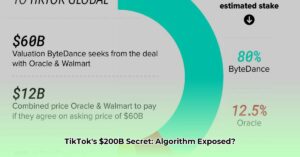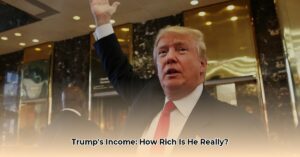The Rise and Fall of the “People’s Bid”
In the turbulent summer of 2020, TikTok found itself teetering on the brink of a U.S. ban amidst escalating data security and national security concerns. Enter Frank McCourt, former owner of the Los Angeles Dodgers, with a bold proposition: Project Liberty. This initiative, framed as the “People’s Bid,” aimed to acquire TikTok’s U.S. operations and rebuild them on American soil, promising enhanced privacy and security. This deep dive examines the intricacies of McCourt’s ambitious plan, exploring its potential impact, the key players involved, and the ultimate reasons behind its failure.
Decoding Project Liberty’s Ambitions
McCourt’s vision extended beyond a simple acquisition. Project Liberty sought to fundamentally restructure TikTok’s operations, addressing the core anxieties surrounding data privacy and national security. By shifting data storage to U.S. servers and implementing stricter privacy protocols, the initiative aimed to alleviate concerns about potential Chinese government access to user information through ByteDance, TikTok’s parent company. This move likely would have appeased some concerns, but the complexities of data security extend beyond server location.
Central to Project Liberty’s plan was the Decentralized Social Networking Protocol (DSNP), an open-source framework designed to empower users with greater control over their data. While this concept held the promise of a more transparent and democratic social media landscape, the practical challenges of implementing and maintaining such a system, including community support and technical execution, remained considerable.
The Players and the Promises
McCourt assembled a diverse coalition to support his bid, including “Shark Tank” personality Kevin O’Leary, financial advisory firm Guggenheim Securities, and a network of undisclosed investors comprising private equity groups, family offices, and a major U.S. bank. While the involvement of these entities suggested significant financial backing, the precise details remained opaque, raising questions about the bid’s long-term viability. Furthermore, while the “People’s Bid” moniker aimed to resonate with TikTok’s vast user base, the lack of transparency surrounding the financial aspects of the project may have contributed to skepticism.
Project Liberty pledged to create an American-owned TikTok with enhanced user privacy protections and greater creator control over content and data. This vision, seemingly a win-win for users and creators alike, hinged on ByteDance’s willingness to relinquish control of its highly successful platform and navigate the complex regulatory landscape.
Unraveling the Bid’s Demise
Despite initial enthusiasm, Project Liberty ultimately failed to acquire TikTok. While definitive answers remain elusive, several factors likely contributed to the bid’s unraveling.
- ByteDance’s Reluctance: ByteDance may have been hesitant to cede control of TikTok’s lucrative U.S. operations.
- Financial Hurdles: Securing the substantial funding required for such a large acquisition may have proved challenging, especially given the undisclosed nature of some investors.
- Political and Regulatory Obstacles: The shifting political landscape and evolving regulations surrounding foreign ownership of tech companies could have presented insurmountable barriers.
- Internal Disagreements: Differing visions within Project Liberty itself regarding the platform’s future direction could have undermined the bid’s cohesion.
- Legal Complexities: Navigating the intricate legal framework governing data security and national security, particularly in the context of a Chinese-owned company, likely posed significant challenges.
The Legacy of Project Liberty
While the “People’s Bid” ultimately fell short, Project Liberty’s emphasis on decentralized social networking and user data control continues to resonate. The initiative’s ongoing work on DSNP suggests a persistent commitment to fostering a more equitable and transparent internet. The failed bid also served as a catalyst for broader discussions about data privacy, national security, and the future of social media governance. Whether Project Liberty’s vision will ultimately materialize remains uncertain, but its impact on the ongoing dialogue surrounding digital ownership and control is undeniable.
Key Takeaways
- Project Liberty represented a bold attempt to reshape the social media landscape by prioritizing user data control and addressing national security concerns.
- The bid’s failure highlights the intricate interplay of business, politics, and technology in the digital age.
- While unsuccessful, the initiative spurred important conversations about the future of social media and the need for greater transparency and user empowerment.
Timeline of Key Events
| Event | Approximate Date |
|---|---|
| Public awareness of Project Liberty | May 2024 |
| Formal Bid Submission | January 9, 2025 |
| Bid Deadline/Rejection | January 19, 2025 |
Key Players
- Frank McCourt: Executive Chairman of McCourt Global, visionary behind Project Liberty.
- Kevin O’Leary: “Shark Tank” investor, public supporter of the bid.
- Guggenheim Securities: Financial advisory firm, instrumental in structuring the bid.
- Undisclosed Investors: Private equity groups, family offices, and a major U.S. bank.
It is important to note that information regarding the financial specifics of Project Liberty and the precise reasons for its failure remains limited. Further investigation and research are needed to gain a more complete understanding of this complex and impactful initiative.







